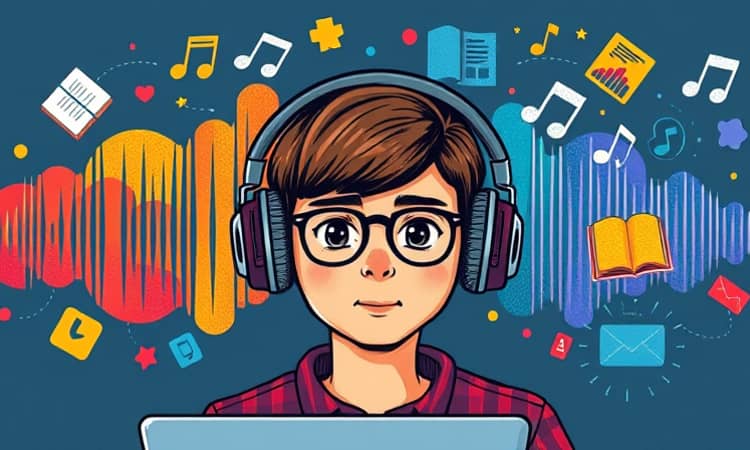In an era where digital education has become ubiquitous, the quality of audio in online courses plays a pivotal role in shaping the learning experience. Beyond video resolution and slide design, sound clarity can make or break student engagement, comprehension, and retention. By prioritizing crisp, professional audio, course creators can transform passive listeners into active learners.
Understanding the Impact of Clear Audio
Research consistently demonstrates that auditory clarity is more than a luxury; it is an educational necessity. A study published in the Journal of Educational Psychology found that high-quality audio recordings scored an average of 7.5% higher on comprehension tests compared to poor audio counterparts. Clear speech transmission ensures that learners capture every nuance, preventing misinterpretations and knowledge gaps.
When audio is muddled or muffled, students often experience frustration and fatigue. They may rewind repeatedly, skip sections, or disengage entirely. Conversely, pristine sound engages the auditory cortex in ways that strengthen memory formation. By delivering crystal-clear narration, instructors can enhance learner engagement and retention and foster a more immersive educational environment.
Supporting Diverse Learning Needs
Online courses must address the needs of a heterogeneous student body. Clear audio is essential for English as a Second Language (ESL) learners, who rely on precise pronunciation to develop phonemic awareness. In fact, the University of Maryland Medical Center reports that improved audio quality leads to better language acquisition and literacy skills over time.
For students with dyslexia or other reading challenges, audio provides an alternative pathway to access content without decoding text. High-fidelity sound can also assist learners with mild hearing impairments, ensuring equal opportunity for comprehension. By integrating supports diverse learning needs into course design, educators create an inclusive atmosphere where every student can thrive.
Educational Impact Categories
To appreciate the full spectrum of benefits, consider these key impact areas:
- Comprehension & Understanding: Clear audio prevents misunderstandings, especially in technical or complex subject matter.
- Engagement & Attention: High-fidelity sound holds attention, reducing cognitive fatigue and boredom.
- Learning Retention: Crisp audio provides tonal cues that reinforce memory and recall.
- Accessibility & Inclusion: Pristine narration supports those with hearing challenges and language barriers.
Technical Essentials for Quality Audio
Achieving studio-level sound does not always require a professional facility. With the right equipment and setup, any educator can produce broadcast-quality audio from a home office or classroom.
First, microphone selection is critical. Among the most popular options are USB and dynamic microphones, which balance affordability and performance. USB mics offer plug-and-play convenience, while dynamic microphones capture richer low frequencies and reject background noise more effectively.
Next, cultivate a consistent recording environment with minimal noise. Simple measures—such as recording in a carpeted room, using thick curtains, or adding foam panels—can drastically reduce echoes and ambient sounds. A dedicated space also helps maintain uniformity across multiple recording sessions.
Finally, basic audio editing techniques elevate raw recordings into polished modules. Normalize levels to prevent jarring volume shifts, apply gentle noise reduction to eliminate hums, and use EQ to accentuate vocal clarity. Even free software tools make these processes accessible to non-experts.
Building Credibility and Professionalism
Instructors are judged not only by their expertise but also by production value. Studies show that poor audio and video quality diminish the perceived credibility of both presenter and content. When students encounter builds trust and professional credibility through clear narration, they are more likely to invest effort, engage in discussions, and recommend the course to peers.
High-quality audio signals respect for the learner’s time and attention. It conveys that the educator is committed to delivering a premium experience. This level of care fosters loyalty and long-term engagement, essential metrics for course success in subscription-based or certification-driven models.
Practical Steps for Course Creators
Whether you are launching your first online course or refining an existing curriculum, these actionable steps will elevate your audio quality instantly:
- Invest in a reliable microphone suited to your budget and space.
- Designate and treat a quiet recording area, free from interruptions.
- Master basic editing workflows: normalize, de-noise, and equalize.
- Test recordings on multiple devices (laptops, tablets, headphones).
- Gather student feedback on audio clarity and iterate accordingly.
By following these guidelines, educators can ensure that audio quality complements pedagogical excellence. Clear sound not only facilitates comprehension but also fosters an emotional connection that motivates learners to persist.
In the competitive landscape of online education, every detail counts. From slide design to interactive quizzes, nothing is more fundamental than the voice that guides students through each lesson. Investing in audio quality is an investment in student success, satisfaction, and advocacy.
As you embark on or refine your course creation journey, remember that improve comprehension and understanding is just the beginning. When learners can hear every word, they absorb every concept, ask deeper questions, and achieve higher outcomes. Elevate your audio, and you will elevate every learner’s potential.
Ultimately, superior audio quality reflects a deeper commitment to education. It signals that you value clarity, accessibility, and excellence in every lesson. By integrating best practices, robust equipment, and thoughtful editing, you create courses that resonate long after the final note ends.
References
- https://www.allegromediadesign.com/blog/high-quality-audio-is-essential-in-modern-elearning
- https://community.articulate.com/blog/articles/audio-basics-for-online-course-design/1102868
- https://www.nacaa.com/file.ashx?id=ec54c403-2ebe-48c6-a5ca-f0a870d37aa7
- https://www.trafera.com/blog/listen-up-how-quality-audio-in-education-amplifies-effective-learning-comprehension-and-retention-for-kids/
- https://universitybusiness.com/the-impact-of-audio-quality-in-education-must-be-moved-to-the-front-of-the-class/
- https://avidproducts.com/2024/06/26/impact-of-audio-early-learning/
- https://www.buzzsprout.com/blog/how-to-start-a-podcast
- https://www.youtube.com/watch?v=pBMUW4RgXuM














